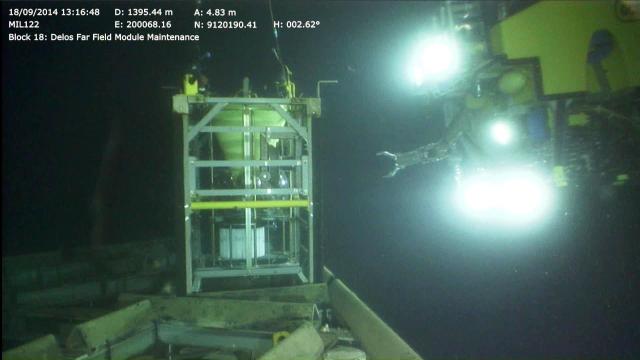Marine biologists have found evidence of a previously unobserved deep-sea migration route more than 4,500 feet beneath the surface of the Atlantic Ocean, according to a new paper.
The deep ocean is a vast and mysterious biome; 80 per cent of it remains unmapped to this day. Scientists hope to better understand the ecology in this region, especially as oil and gas operations are drilling in deeper water. A new study from a large international collaboration of universities has found photographic evidence of deep-sea populations changing seasonally, a sign that these fish are migrating elsewhere.
This data originates from time-lapse photographs taken between February 2009 and July 2016 from two stations of the Deep-ocean Environmental Long-term Observatory System (DELOS), both located off the coast of Angola; one is 164 feet from an oil well. The researchers counted how many fish were in each photograph per day over the 7.5-year period, according to the paper published this week in the Journal of Animal Ecology.
The analyses revealed a seasonal pattern to the amount of fish observed in both of the observatories. Not only that, but the fish abundance seemed correlated with the overall chemical energy from organics on the surface of the ocean; the deep-sea fish peaked approximately four months after the peak in the biological activity on the ocean’s surface—around the amount of time it would take that carbon to descend to the seafloor.
For now, this study just presents early evidence of a migratory pathway, and it’s unclear where the fish actually go. But there’s a lot more work the team hopes to do. The DELOS platforms with the experiments will operate for a total of 25 years, and the team wants to gather more information about the connection between energy on the surface and the fish below.
It’s important work. “We don’t have a lot of long-term studies in the deep ocean,” Rosanna Milligan, the study’s first author and an assistant professor at Nova Southeastern University in Florida, told Gizmodo. “That’s something that’s starting to change, but it’s also something becoming increasingly important. Most human impacts are impacts that have effects over months to years, if not much longer—given climate change, over decades or centuries. With this data, we have these longer time series.”
This knowledge is also important for short-term impacts as well, especially with respect to oil and gas operations. Oil and gas companies are moving to drill in deeper waters, but scientists don’t have data on how their drilling might impact animals living in the depths. For example, the BP-leased Deepwater Horizon drilling rig sat in 4,100 feet of water when it exploded in 2010, setting off the largest oil spill in history. But scientists still don’t understand the long-term consequences of this ecological disaster.
Knowing that deep-sea fish migrate, as well as where they migrate to, would be crucial for efforts to to protect them from destructive human activities.
